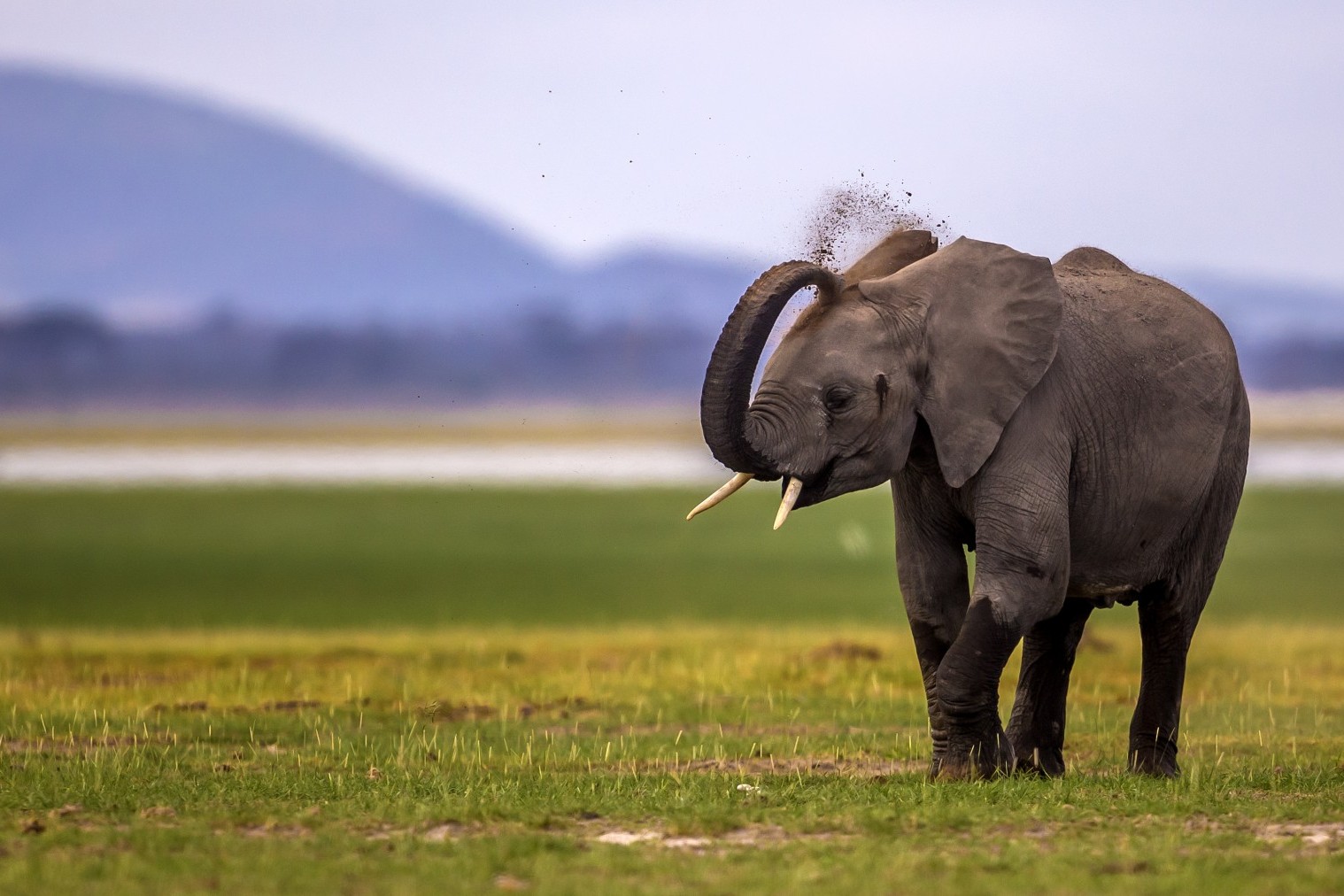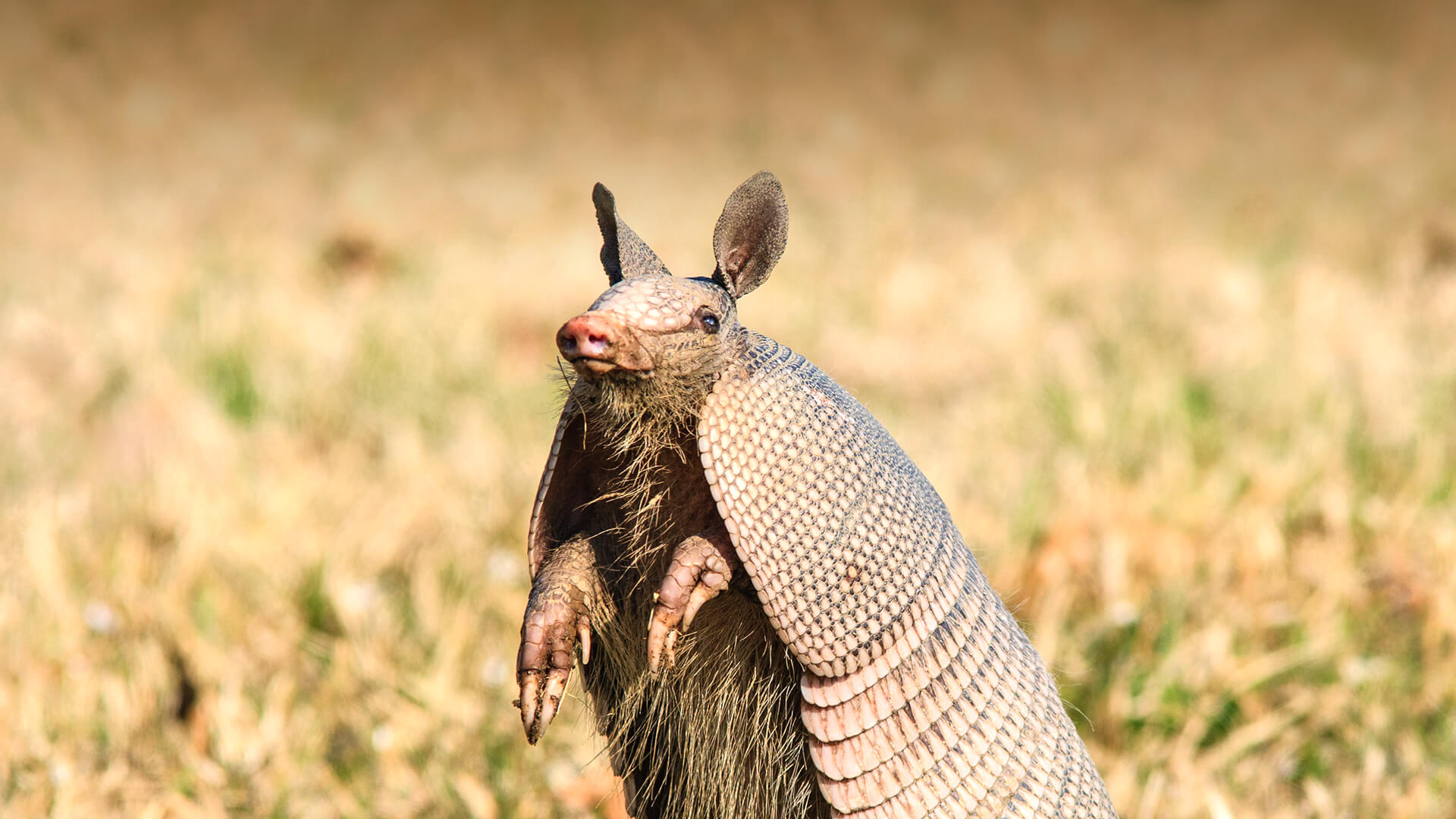Home>Production & Technology>Sound>What Sound Does An Elephant Make


Sound
What Sound Does An Elephant Make
Published: December 18, 2023
Discover the fascinating sound an elephant makes and learn more about the communication methods of these majestic creatures.
(Many of the links in this article redirect to a specific reviewed product. Your purchase of these products through affiliate links helps to generate commission for AudioLover.com, at no extra cost. Learn more)
Table of Contents
Introduction
When it comes to iconic creatures of the animal kingdom, elephants undoubtedly hold a prominent place. These majestic creatures, with their sheer size and gentle demeanor, have fascinated humans for centuries. We are often enchanted by their impressive physical features, from their enormous tusks to their distinctive trunks. However, have you ever wondered what sound an elephant makes?
Contrary to popular belief, elephants are not completely silent creatures. While they may not communicate through a wide range of vocalizations like birds or primates, they do produce a variety of sounds that serve different purposes in their social interactions and daily lives.
In this article, we will explore the fascinating vocal repertoire of elephants and delve into their distinctive ways of communication. From the famous trumpet call to the low-frequency rumble and growls, elephants have a unique language that helps them communicate within their social groups and navigate their environment.
So, if you’ve ever wondered about the sounds emanating from these gentle giants, keep reading to discover the surprising world of elephant vocalizations.
Common Misconceptions
Before delving into the specifics of elephant vocalizations, let’s address some common misconceptions surrounding the sounds these majestic creatures make.
One prevalent misconception is that elephants trumpet all the time. While trumpeting is indeed one of the distinctive sounds they produce, it is not their only form of communication. Elephants use various vocalizations and non-vocal signals to express different emotions and convey messages within their social groups.
Another misconception is that elephants roar like lions. While elephants can produce low-frequency vocalizations that may resemble a roar to an untrained ear, their roaring behavior is not as culturally ingrained as it is for lions. Lions roar as a way to mark territory and communicate with other lions, whereas elephants use different sounds to communicate with their herd and navigate their environment.
It’s also important to dispel the misconception that elephants are always silent. While they are generally quieter compared to some other social animals, they do have a range of vocalizations that serve specific purposes in their lives. Understanding these sounds can provide valuable insights into their behavior and social dynamics.
Now that we have cleared up these misconceptions, let’s dive into the fascinating world of elephant vocalizations and explore the various sounds they produce.
Elephant Vocalizations
Elephants possess a unique vocal repertoire that allows them to communicate with their herd members and convey a wide range of emotions. While they are known for their trumpeting calls, their vocalizations extend beyond just that.
One of the most well-known sounds produced by elephants is the trumpet call. This loud and distinctive sound can travel over long distances, making it an effective way for elephants to communicate with each other. The trumpet call can signify various things, including excitement, aggression, or warning to potential threats. It is produced by forcing air through the trunk, resulting in a prolonged and resonant blast.
However, trumpeting is not the only sound in an elephant’s repertoire. They also produce a low-frequency vocalization known as the rumble. Rumbles can range in pitch and intensity and are primarily used for communication within the herd. Elephants use rumbling to express emotions such as contentment, bonding, and even as a means for long-distance communication between separated individuals.
In addition to trumpeting and rumbling, elephants can also emit growling sounds. These low-pitched vocalizations are typically associated with aggressive behavior or when elephants are in a state of heightened arousal. Growls serve as a warning signal to other elephants or potential threats, indicating a need for caution or establishing dominance.
While less commonly heard, elephants are also capable of producing crying sounds and bellowing calls. Crying sounds are characterized by a nasal quality and are believed to be associated with distress or pain. Bellowing calls, on the other hand, are deep and resonant, often produced during periods of intense social interaction or during mating rituals.
Overall, elephants possess a remarkable ability to produce a variety of vocalizations that enable them to communicate effectively within their social groups and navigate their surroundings. These sounds play a crucial role in their complex social dynamics and contribute to their overall behavior and well-being.
The Trumpet Call
One of the most distinct sounds associated with elephants is the trumpet call. This powerful and resonant vocalization is created by forcing air through the elephant’s trunk, resulting in a loud and trumpeting sound that can travel over long distances.
The trumpet call serves various purposes in elephant communication. It can be used as a form of excitement when elephants greet each other after a period of separation or during social interactions within the herd. It can also serve as a warning signal to potential threats, expressing aggression and deterring predators or rival animals.
Interestingly, elephants can modulate the pitch and intensity of their trumpet calls. A higher-pitched trumpet may indicate excitement or playfulness, while a lower-pitched trumpet can convey aggression or a warning signal.
Furthermore, the trumpet call is not only produced with the intention of communicating with other elephants. Elephants have been observed trumpeting in response to unusual or alarming stimuli in their environment, such as the presence of humans or unfamiliar sounds. This demonstrates their ability to use the trumpet call as a way to express their curiosity, caution, or concern.
Overall, the trumpet call is a highly versatile and distinctive vocalization that plays a crucial role in the communication and social dynamics of elephants. Its powerful and far-reaching nature makes it an effective means of conveying various messages within the herd and interacting with the wider environment.
Rumble Communication
In addition to the trumpet call, elephants also utilize a unique form of vocalization called the rumble. Rumbles are low-frequency sounds that elephants produce through their larynx and vocal cords.
Rumble communication is incredibly important for elephants as it allows them to convey a wide range of emotions and messages within their social group. These low-frequency vocalizations can vary in pitch, duration, and intensity, and are characterized by a deep, vibrating quality.
One important function of rumbling is to express social bonding and contentment within the herd. Elephants often emit rumbling sounds when they are in close proximity to each other or engaged in grooming behavior. This serves as a way to strengthen social bonds and maintain group cohesion.
Rumbles are not limited to interpersonal communication; they also facilitate long-distance communication. Despite their low-frequency nature, rumbling sounds can travel through the ground over considerable distances. This allows elephants to maintain contact with separated herd members or convey messages to elephants in distant locations.
Furthermore, researchers have found that elephants can differentiate between individual rumble calls, identifying specific individuals based on their unique vocal signatures. This ability to recognize and interpret rumble communication adds a layer of complexity to their social interactions.
In some instances, elephants may also use rumbling as a form of reassurance or comfort. In times of distress or pain, elephants have been observed producing soft, comforting rumbles, potentially as a means of self-soothing or seeking support from other members of the herd.
Rumble communication showcases the remarkable social intelligence and emotional capacity of elephants. Through these low-frequency vocalizations, they are able to establish and maintain social connections, navigate their environment, and express a range of emotions within their complex social hierarchy.
Growling and Roaring
While elephants are known for their trumpet calls and rumbling communication, they are also capable of producing growling and roaring sounds. These vocalizations, although less common, serve specific purposes in elephant behavior and communication.
Growling is a low-pitched vocalization that elephants use to communicate aggression, dominance, or territoriality. It is often accompanied by behavioral displays such as erecting the trunk, flaring the ears, or adopting a defensive posture. Growling serves as a warning signal to other elephants, indicating a need for caution or establishing dominance within the social hierarchy.
Roaring, on the other hand, is a deep and resonant vocalization that can resemble a roar. While not as frequent or culturally ingrained as the roars of lions, elephants can produce roaring-like sounds during periods of intense social interaction or during mating rituals. Roaring is often observed in male elephants during musth, a condition characterized by increased testosterone levels and heightened sexual activity.
Both growling and roaring serve as forms of communication and expression of emotions within the elephant population. These vocalizations convey information about dominance, aggression, and reproductive readiness, allowing elephants to navigate their social dynamics and mating rituals.
It’s worth noting that the growling and roaring sounds produced by elephants are distinct from those of other animals. Elephants have their unique timbre and resonance, reflecting their size and physical characteristics. These vocalizations not only serve functional purposes but also contribute to the overall soundscape of the elephant’s habitat.
By understanding the significance of growling and roaring in elephant vocalizations, researchers and conservationists can gain valuable insights into their behavior, social dynamics, and reproductive strategies.
Crying and Bellowing
In addition to their trumpet calls, rumbling communication, and growling behaviors, elephants are also capable of producing crying sounds and bellowing calls. These vocalizations convey different emotions and serve specific purposes in elephant communication.
Crying sounds produced by elephants exhibit a nasal quality and are often associated with distress or pain. These vocalizations may be emitted when elephants are experiencing physical discomfort, emotional stress, or when they are separated from their herd members. Crying sounds can be soft and subtle, or they can escalate into louder and more intense cries, depending on the situation.
Bellowing calls, on the other hand, are deep and resonant vocalizations that elephants produce during periods of intense social interaction or during mating rituals. These powerful calls can be heard from afar and often serve as a means of communication between male elephants and potential mates. Bellowing calls can indicate the reproductive readiness of male elephants and can also serve as a declaration of dominance or territoriality.
Both crying and bellowing vocalizations are less commonly heard compared to trumpet calls and rumbles. However, they provide important insights into the emotional and social lives of elephants. Crying sounds speak to their capacity to experience distress or pain, emphasizing the depth of their emotional range. Bellowing calls highlight the complex social dynamics and reproductive strategies of these magnificent creatures.
It is crucial to note that while crying and bellowing are part of elephant vocalizations, they are not as frequent or prominent as some of the other sounds elephants produce. Their occurrence may vary depending on environmental factors, social contexts, and individual elephant behavior.
By studying and understanding the significance of crying and bellowing vocalizations, scientists and conservationists can gain a deeper understanding of the well-being, emotions, and social dynamics of elephants. These vocalizations offer valuable insights into the inner world of these remarkable creatures, helping us appreciate and protect their natural habitats.
Conclusion
Elephants, with their impressive size and gentle demeanor, communicate using a rich repertoire of vocalizations. Although they may not have the diverse range of sounds seen in some other animals, their unique sounds serve specific functions within their social groups and daily lives.
Contrary to common misconceptions, elephants are not completely silent creatures. Their vocalizations include the iconic trumpet call, which can signify excitement, aggression, or serve as a warning to potential threats. The low-frequency rumble, on the other hand, is a versatile form of communication that helps elephants express bonding, contentment, and navigate their environment.
In addition to trumpeting and rumbling, elephants can emit growling sounds to communicate dominance, aggression, or territoriality. Roaring-like vocalizations are observed during periods of intense social interaction or mating rituals. They also produce crying sounds, indicating distress or pain, and bellowing calls, which serve as declarations of dominance or signals for mating readiness.
By understanding and studying these vocalizations, researchers, conservationists, and animal enthusiasts gain valuable insights into the behavior, social dynamics, and emotional capabilities of elephants. These sounds not only allow us to marvel at the complexity of their communication but also play a vital role in conservation efforts and ensuring the long-term survival of these majestic creatures.
So, the next time you encounter elephants in the wild or in a sanctuary, listen closely. You might just catch a glimpse into their vibrant world of communication through their magnificent and diverse vocalizations.











